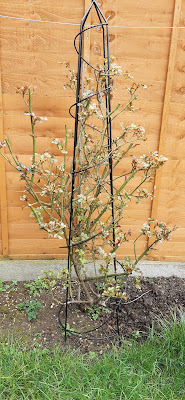Reflections on Spring
The equinox has come and gone and suddenly, it seems, Spring is here. During the last week the tightly furled buds on previously bare branches have burst into life, blossom is everywhere and ploughed fields display a hint of green. We get excited about it still, despite our urbanisation, our artificial surroundings and our post-seasonal lifestyles.
The line at the top of this piece comes from the lecture notes of a talk given by Professor J.R.R. Tolkien at the University of St Andrews in 1938. The lecture was on Fairy Stories, a subject close to his heart. At this point, he was writing what eventually became the Lord of the Rings; although his audience could not have known it, Tolkien was speaking aloud about his doubts concerning the value of his writings. To address these he used a quintessentially Tolkien metaphor- the Tree of Tales, 'with which the forest of days is carpeted'. Musing that so many stories have already been written, the leaves of the tree, he wondered why he was attempting yet another one; 'it seems vain to add to the litter. Who can design a new leaf? The patterns from bud to unfolding, and the colours from Spring to Autumn, were all discovered by men long ago'.
Yet having posed this question, at a time when, by all accounts, his story had stalled, he gave an answer that amounted to a manifesto of his beliefs:
'Spring is, of course, not really less beautiful because we have seen or heard of other like events, never from worlds beginning to worlds end the same event. Each leaf, of oak, ash and thorn, is a unique embodiment of the pattern, and for some this year may be the embodiment, the first ever seen and recognised, though oaks have put forth leaves for countless generations of men'.
Although he was speaking metaphorically of stories, he was speaking literally too. Tolkien had a deep love of nature and was very alert to the natural world around him. This comes through in his stories, where there are detailed descriptions of the plants and landscape at every turn. When Frodo and Sam are walking through Ithilien, they are a long way South of the Shire, their home, and all around them are signs of spring:
'Here Spring was already busy about them; fronds pierced moss and mould, larches were green-fngered, small flowers were opening in the turf, birds were singing.'
As humans, we are programmed to be alert to the changing seasons, not just the length of days and the changing temperatures, but the cycle of life displayed by plants and animals. As we reach the end of winter, we feel the change of season and our hearts lift in response. Have you ever found yourself smiling at the sight of a blossom-laden tree, or the song of the birds? As we go through life of course, the danger is that our enjoyment becomes blunted- we've seen this all before. In his lecture, Tolkien was keen to say that we must endeavour to still see things the way we did as children, as worthy of wonder:
'We should look at green again, and be startled anew (but not blinded) by blue and yellow and red.'
Last spring, the evidence of new growth was a consolation in the face of the lockdown, this year, it is a promise of recovery. In the light of loss, both of time and, for many us, of loved ones, we should look with a new intensity at the manifestations of Spring, appreciating that we are here to see it whilst remembering those who didn't make it. Tolkien had something to say about that too, through his character Bilbo Baggins:
'I sit beside the fire and think, of how the world will be, when winter comes without a spring that I shall ever see.'
So, if you can, take time to look at the perfection of an unfurling leaf, the delicate structure of blossom, and to hear the birdsong. This Spring is unique. For my three year old grandchild, if this is not the first ever seen and witnessed, it may well be the first experienced and remembered. For me, it is overlaid with memories of previous ones, but I am endeavouring to experience it here and now, marvelling anew at the miracle.


No comments:
Post a Comment